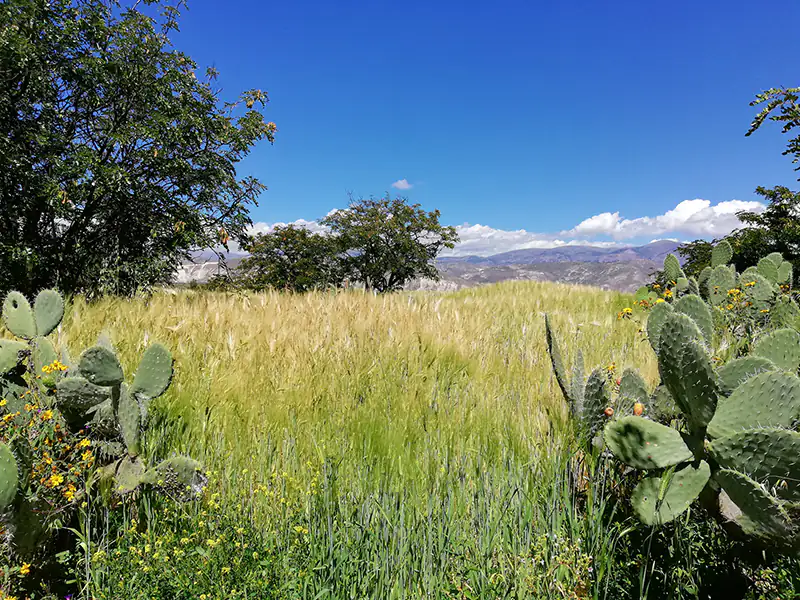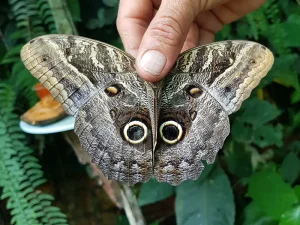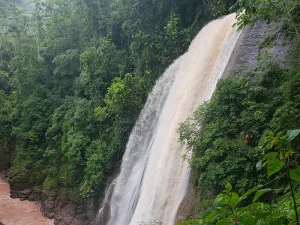Waytari is a Quechua word that means ‘Flowering’ and this is the word that I personally associate with Ayacucho. A region with a lot of history but that in the last 20 years has tried to fight to solve all those political, military and terrorism problems that attacked its lands and its inhabitants in the 80’s and 90’s.
Now Ayacucho flourishes day by day and is becoming one of the most visited tourist spots by Peruvians and also by foreigners.
What is it that makes Ayacucho so special?
For me it is his perfect heaven . There is no other sky in Peru like this, it is a resplendent blue which contrasts with the architecture of the 33 churches present in the historic center of the city, and the one that contrasts with the stone walls of the first empire of Peru: The Wari Empire (600 – 1100 BC). An empire that expanded to the north and south of Peru through long roads and avenues.
The Wari built very well organized cities, with temples, artisan and potter areas, residential areas, urban areas, etc. One of them is very visited in the city of Cusco, in the South Valley is the city of Pikillacta. Which is amazing! But! Here in Ayacucho we have the center of this empire, the main Huari city that spread over more than 2,200 hectares. In fact, it is one of the main attractions of the city and one of the favorite places to visit for all of us who love history and archaeology! This is one of the activities that you can do on your own, because this archaeological complex is only 30 min. from the city of Huamanga (Ayacucho) and the entrance fee is S/. 3.00 Adults, S/. 1.00 students and S/. 0.50 schoolchildren. I must mention that just walking to the Huari city is quite an experience. You will see long avenues surrounded by cacti with their fruit the Tuna (which they also sell outside the complex, it is delicious, brightly colored and super refreshing!) and you will have an incredible view of the city of Huamanga and the mountains that surround it.

In Ayacucho you can also find the Pueblo de la Quinua , the town of master craftsmen. This cozy town keeps a lot of history related to our battles for the Independence of Peru but it is also the cradle of great artisans, who were born with magic in their hands to create and shape clay with a little water and thus create ceramic pieces. amazing and high quality. When you visit the Pueblo de la Quinua you will find the artisans ready to explain step by step how they create their ceramics, they will do it in a very friendly way and you will even be able to participate in the experience. Give yourself a few minutes to walk around the town, enter different galleries and take some pictures! – Always remember to ask for prior permission!
Now, as I mentioned in the previous paragraph, something super important happened in this region! And it is that in the Pampa de Ayacucho saw the last battle for the Independence of Peru (on December 9, 1824) and it is for this reason that, since 1980, it has been a historical sanctuary whose objective is not only to protect the history of the place, but also to its flora and fauna. When you get here, you will be surprised by the immensity of the place and also by the contrast that occurs when you see the Obelisk contrast with the Ayacucho sky . If you go on a tour prepare to listen for almost half an hour step by step the story of what happened in this place. It is super interesting only that it is possible that you get a little distracted by the beauty of the place. When they finish with the explanation, I recommend you walk through the Historic Sanctuary, breathe the fresh air given by the eucalyptus and other trees that surround the place and let yourself be amazed by the 360º views that you will have. This was one of my favorite places in Ayacucho.
These 3 places are the most visited in Ayacucho, places with beauty, history and with people who carry art in their hands. I summarized this experience in this video, I hope you like it. At the end, keep reading and I will tell you about other super interesting places in this region.
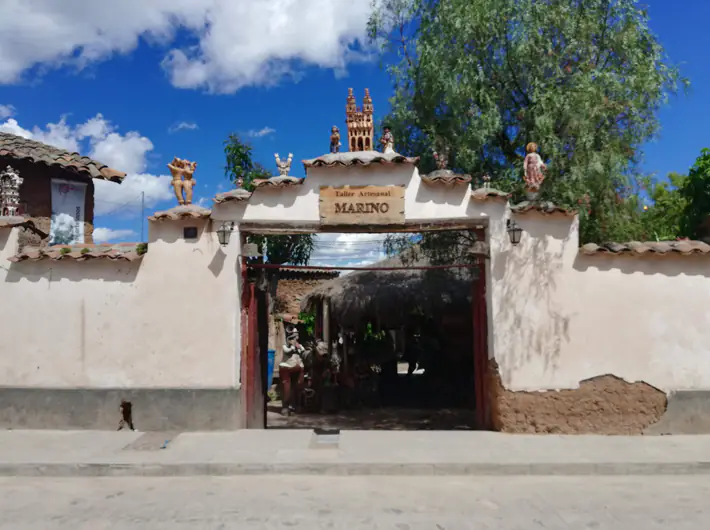
Other amazing places in Ayacucho!!
At 2850 meters above sea level you will find a cave with more than 20,000 years of history… yes, 20,000. This is the Cueva de Pikimachay , one of the first places in our ancient Peru to be inhabited by men who began to domesticate Andean camelids, guinea pigs and where agriculture probably began. Here you can go through the entire cave – very carefully, yes – and if you like photography, this place is ideal for taking incredible photos! And well, walking through the cave you will find offerings and ritual objects which have been made by healers from the Pacaicasa community, they make payments to the land asking for the healing of the sick, obtaining work, love ties and others. When I visited the cave, my guide told me not to touch any of these objects since they can be very energetic and hurt me. But well, that depends on whether you believe in that mystical part that surrounds many corners of Peru. Personally, I did feel a lot of energy in this place, but for me it was pure positive energy.
I did not make this trip to Ayacucho alone, in fact the idea of traveling to this region came from my father, who gave me the mission of looking for places to visit and creating an itinerary. For this, I was already super excited with the idea of traveling to Ayacucho because I had seen many photos of an incredible place called MILLPU .
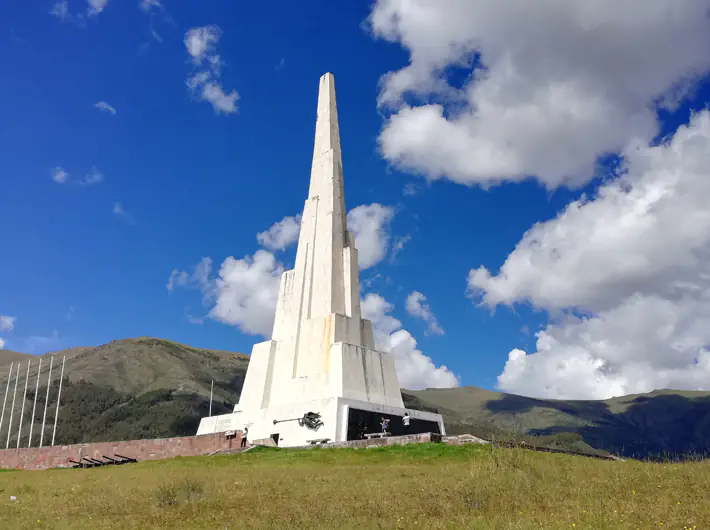
Have you heard of Millpu?
It is one of the most beautiful places I have ever seen! They are natural pools full of turquoise water that go down in a staggered way between the mountains at more than 4000 meters above sea level. To visit it I went with an agency called Huancaraylla Tours Peru
https://huancaraylla.com.pe/ who were the first to start taking groups to the turquoise waters of Millpu. The tour began in the morning from Huamanga (or the city of Ayacucho) and from there we headed towards Millpu, first passing through a sector where tourism is developing Potato Route and where you can also visit the Caratara de Pumapaqcha , which is like an oasis among the mountains. Continuing with the route, we arrived at the community of Circamarca and at the base from where we would start the walk uphill, observing all these natural turquoise pools. What a wonderful place!
That yes, I recommend that this be one of the last activities you do in Ayacucho since, as it is at 4000 meters above sea level, your body needs to be well acclimatized with the altitude. That day I felt super happy to share this experience with my dad, who put all his energy to reach the top of the mountain and see the birth of these pools. The turquoise color is formed by the different minerals of the earth that are mixed with the water in each pool. If you want you can also enter them but I warn you that the water is ice cold! If you plan to do it, do not forget to bring an extra change of clothes and slippers. The place is simply beautiful, I 100% recommend that you visit it, breathe fresh air and thank the universe for being there.
Another place I visited was the Inca city of Vilcashuamán. Yes… the Incas are friends everywhere and each one of their constructions is more wonderful than the constructions seen previously. That day I remember that the weather was perfect, there was a beautiful sun but it did not burn or make you feel uncomfortable, a very typical climate of the Peruvian Andes. Vilcashuamán is a place where history mixes with reality.
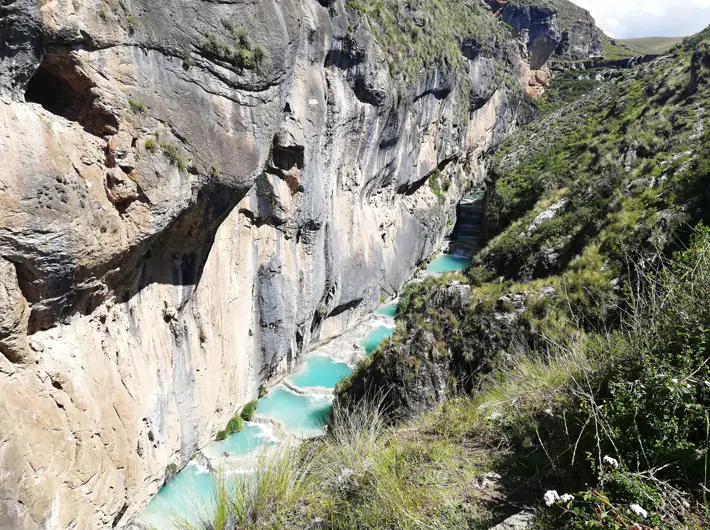
The Incas, upon arriving here, built an administrative center which, according to historians, could have housed around 40,000 people! After the Spanish conquest and the evangelization process, a church was built on top of the Temple to the Sun God, which in fact is what is currently observed when arriving at the Vilcashuamán square, and the Ushnu stepped pyramid also stands out. You can climb through its main entrance until you reach the top of it, from where you will have a panoramic view of the current town of Vilcashuamán. And surely you are already wondering… And what does Vilcashuamán mean? It is written in Quechua and means Sacred Falcon. And it is called that since the Inca city designed in that place had the figure of a falcon, which is something very characteristic of the Inca cities, these were designed in the form of sacred animals such as, for example, the ancient city of Cusco the which was shaped like a Puma.
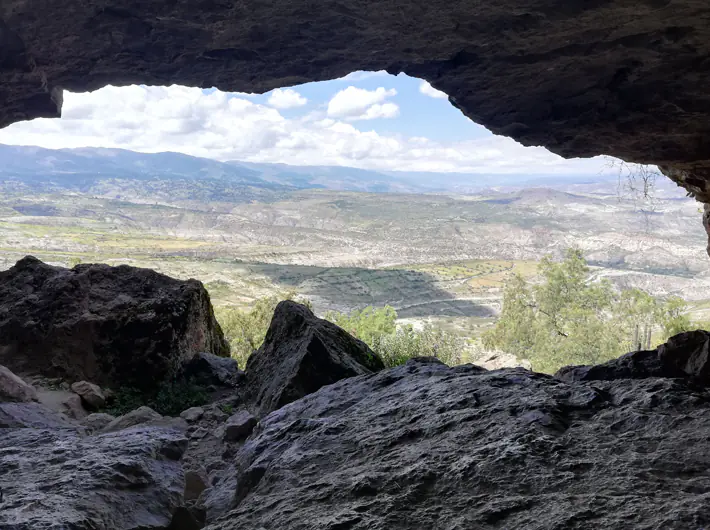
As you can see, Ayacucho has a lot to offer to national and foreign tourists! I still have to visit other corners of that beautiful region, for example: Sarhua! I hope very soon to return and get to know that town that gives the opportunity to carry out Rural Community Tourism. And I would also like to participate in the traditional Chaccu festival!
Visit Ayacucho !!
Useful data:
Altitude: 2500 meters above sea level (Huamanga city).
Access routes: Air or land. From Lima approx. 7 hours (Via Libertadores)
Holiday Dates:
– February: Carnivals!
– March/April: Easter! The date on which Ayacucho is most visited. Remember to make reservations a month in advance.
– April 25: Anniversary of the founding of the City of Humanga.
– May 3: Festival of Crosses and Silver
– June 24: Chacchu de Vicuña
For more information about this destination, go to: https://www.peru.travel/es-es/donde-ir/ayacucho.aspx


